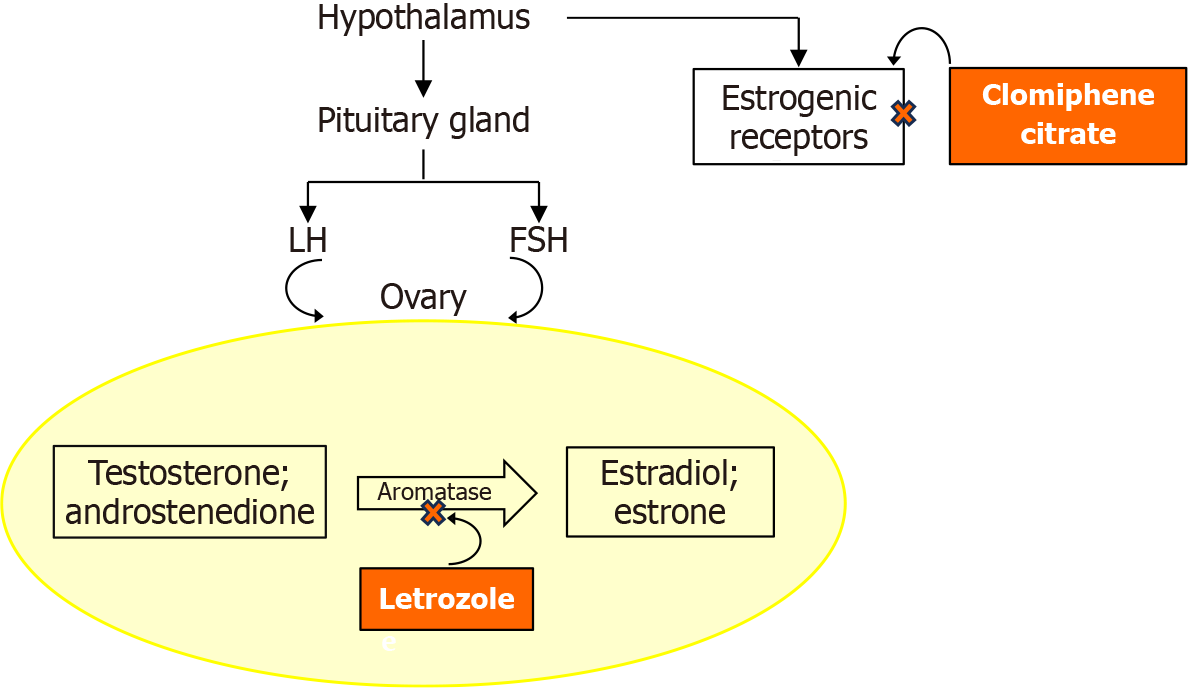Copyright
©The Author(s) 2025.
World J Diabetes. Jul 15, 2025; 16(7): 108789
Published online Jul 15, 2025. doi: 10.4239/wjd.v16.i7.108789
Published online Jul 15, 2025. doi: 10.4239/wjd.v16.i7.108789
Figure 1 Illustration depicting the mode of action of clomiphene citrate in comparison to letrozole in ovulation induction.
Clomiphene citrate acts as a non-steroidal selective estrogen receptor modulator, i.e., it binds to estrogen receptors in the hypothalamus, thereby inhibiting the negative estrogen feedback to the hypothalamus. In turn, this leads to a change in the pulsatile release of gonadotropin-releasing hormone that drives an increase in the secretion of follicle-stimulating hormone, promoting follicle development. Letrozole, an aromatase inhibitor, reduces estrogen production by blocking the conversion of androgens to estrogens, i.e., letrozole inhibits the cytochrome P450 aromatase enzyme complex. This creates negative feedback to the hypothalamus, stimulating the pituitary gland to produce more follicle-stimulating hormone, leading to folliculogenesis. Letrozole has no adverse effects on the endometrium and cervical mucus and is preferred to clomiphene citrate to induce ovulation. LH: Luteinizing hormone; FSH: Follicle-stimulating hormone.
- Citation: Rambaran N, Islam MS. Decoding androgen excess in polycystic ovary syndrome: Roles of insulin resistance and other key intraovarian and systemic factors. World J Diabetes 2025; 16(7): 108789
- URL: https://www.wjgnet.com/1948-9358/full/v16/i7/108789.htm
- DOI: https://dx.doi.org/10.4239/wjd.v16.i7.108789









